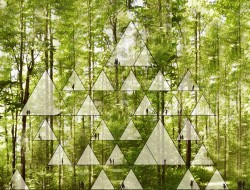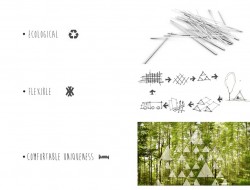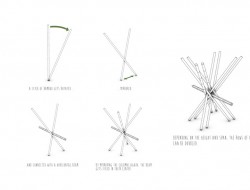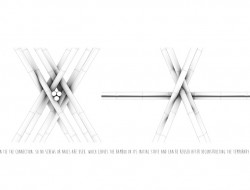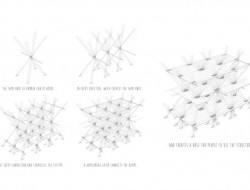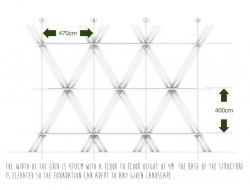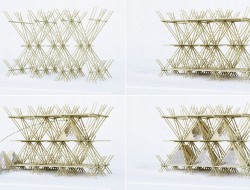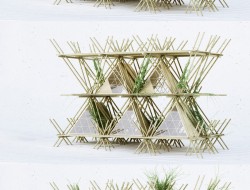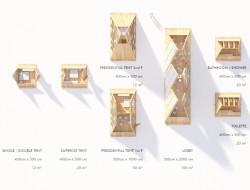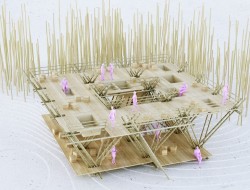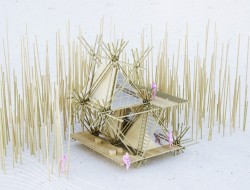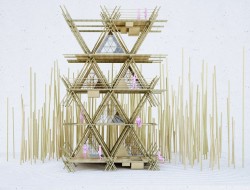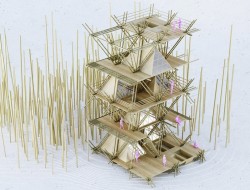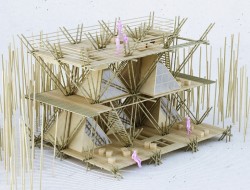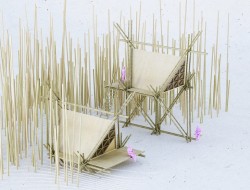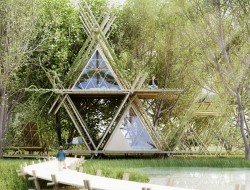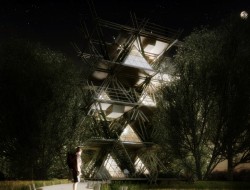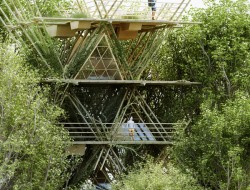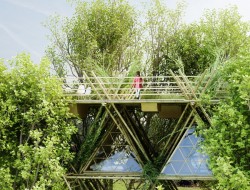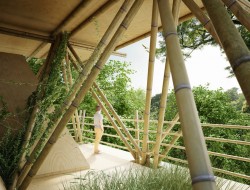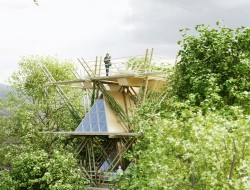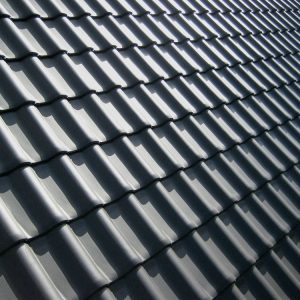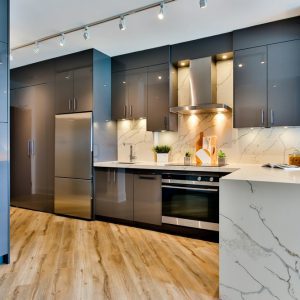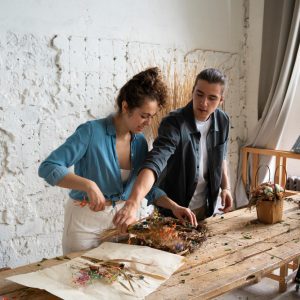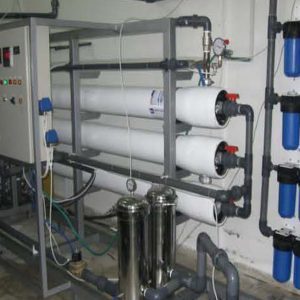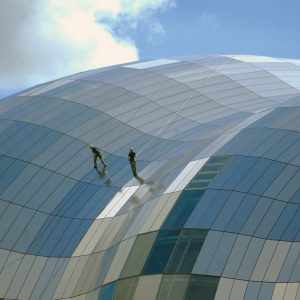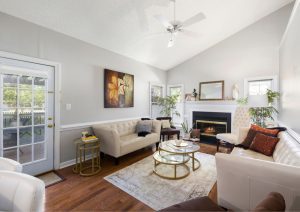Badaling China – Penda Design House
Concept only
Badaling is a forested mountain area about 100 kilometres from Beijing. It is one of the main sites for viewing and walking The Great Wall. Entries were invited in a competition to design an eco-hotel in one of China’s most successful, but ecologically sensitive, destinations – The Badaling Great Wall.
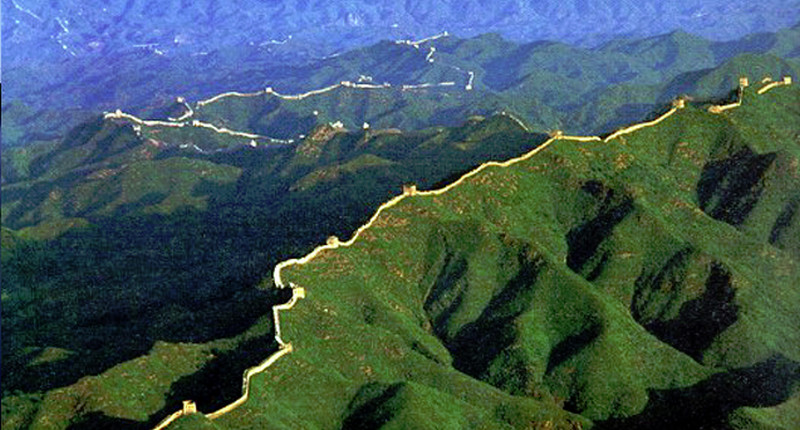
There is a saying in China “He who has never been to the Great Wall is not a true man”. The Badaling Great Wall is the most representative of the Ming Dynasty Great Wall. The outpost of Juyongguan was considered the gateway to the Capital. A section measuring 3741 metres in length, including 21 tower terraces was opened to tourism in 1958. Since then, the area has had some 130 million visitors.
The site for the tent design competition is located in the north-west part of the Badaling Great Wall. The tent hotel will be a special residential area combining natural scenery and cultural relics, helping visitors to experience the Great Wall culture and its relationship with the Chinese people.

From Penda:
Our design for the AIM ‘legend of tent’ competition is driven by 3 main principles: an ecological understanding of the project, a flexible structure, which can be adapted to different surroundings and creating a comfortable atmosphere in a unique environment.

ecological understanding:
the design uses natural and local materials as a structural element. The focus was to create a connection which leaves no impact on the site, nor any harm on the bamboo itself, so after the temporary hotel is deconstructed, the materials can be reused as scaffolding on a construction site or reused as another temporary hotel on a different location.
flexible structure:
The structure is inspired by the teepees of native Americans, which didnt leave any harm on the site, nor on the material itself, because the joints were connected with ropes, so the tents were easy to construct, deconstruct and carried. A truly flexible system.
For our structural system, a stick of bamboo gets rotated, mirrored and connected with a horizontal element, which creates the possibility to grow in height. The columns get mirrord again, which fixes the beam in their center. Depending on the height and span of the grid, the rows of columns can be doubled, which results in a very clean joint. A rope can tie the connection, so no screws or nails are used. the bamboo stays in its initial state and can be reused afterwards.
the same knots of bamboo can be added in every direction, which creates the same knot on every connection and stabilizes the whole system. A new horizontal layer can be implemented and connects the beams, which creates a base for people to use the structure.
The width of the grid is 470cm with a floor to floor height of 400m. The base of the structure is elevated, so the foundation can adept to any given landscape.
By adding the same joints of bamboo and connecting them with each other, we get a structural grid where triangulated pots can be implemented: Sleeping pots of different sizes, larger pots for families, connected pots for larger functions like lobby or restaurant and pots for a bathroom or toilette.
We see the structure not just as an element which inhabits typical functions of a hotel and is connected to nature, we also see it as an element, where nature can be implemented and after a certain time, those plants can grow take over the whole structure.
comfortable uniqueness:
The 3rd key principles of our design is to create a comfortable environment in a unique experience. Hiking through the woods, one is normally surrounded by treetrunks, lacking a sense of orientation and visibility. When we were kids, we used to experience our environment differently. We used to connect to nature in a more direct way, climbing trees, enjoying unique views and exporing a different wildlife. We were connected to our environment in a 3 dimensional way. We were one with the birds…
This feeling of leaving city-life behind and getting connected to nature and experiencing our natural environment is the driving idea of our proposal.
With a flexible structural system and connected it with comfortable spaces, we have the opportunity to create a variety of buildings of different sizes. depending on the needs, the size and amount can grow: from single rooms to a family structure, to a size of a clubhouse or even up to larger scales, which fombine more functions of a typical hotel like a lobby or restaurant within one structure.
All is depending on the needs and on the demands, but each building connects in a very responsible diaglog to our natural environment.
While we voted for this design, it was not chosen as one of the five finalists. If you would like to see the winning entries, you can find them at Architects in Mission.
Click on any image to start lightbox display. Use your Esc key to close the lightbox. You can also view the images as a slideshow if you prefer ![]()

